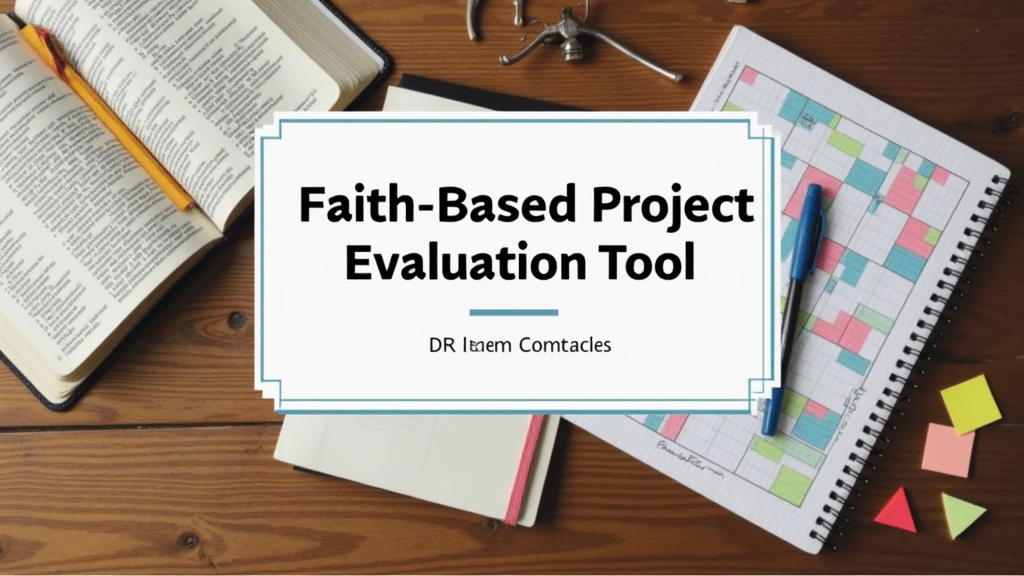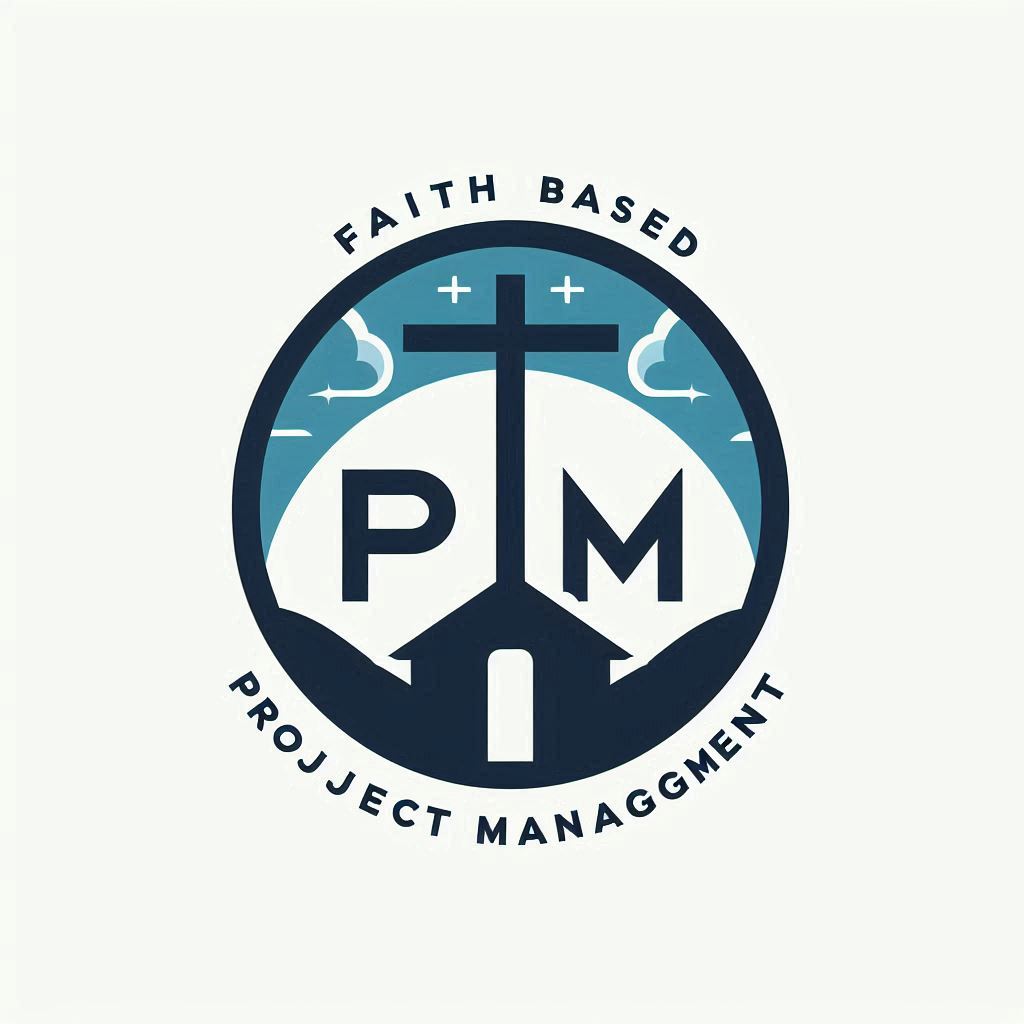Faith based projects, whether in ministry or community outreach, come with a unique challenge: how to measure success in ways that honor both spiritual and practical goals. Numbers like event attendance or funds raised only tell part of the story. Real success often reveals itself in changed lives, stronger relationships, and deeper spiritual roots. I’m going to break down a few ways to measure impact that go beyond surface level stats, so your efforts actually reflect the heart of your mission.

Finding Balance: Faith Driven Project Metrics
Counting the people who show up or dollars collected might look impressive in a report. Still, anyone leading a faith based project knows that true growth often happens behind the scenes. I look for ways to measure both visible impact and those hidden moments of personal growth. Some of the most useful metrics I’ve found focus on:
- Spiritual Growth: Is there growth in participants’ prayer life or Scripture reading?
- Community Building: Are new friendships forming or deeper connections developing through small groups or mentorship?
- Service & Influence: Are volunteers becoming more engaged? Does the project ripple out into lasting community change?
It’s one thing to record numbers, but tracking these kinds of changes really shows if a project aligns with your faith driven purpose.
Simple Faith Based Tracking Tools
Trying to capture deep spiritual change with a spreadsheet can feel clunky, but there are some straightforward tools I use to keep evaluation both meaningful and practical.
Faith and Life Surveys
I like using short surveys or check ins at the start and finish of a project. The questions should be specific to your project, but here are a few that get right to the heart:
- Has this experience changed your approach to prayer or Bible reading?
- Did you develop any new faith practices during this time?
- How comfortable are you sharing your faith with others now?
Tracking responses before and after helps spot trends in spiritual development. For example, I once worked with a youth retreat that saw a 35% jump in daily personal prayer after we started using this check in approach.
Collecting Transformational Stories
Personal stories can bring your impact reports to life, and give a fuller sense of what’s really happening. Testimonies, written or recorded, turn a simple “yes/no” into a deep look at how someone’s faith adventure evolved. Sharing stories about reconciliation, new commitments, or unexpected answers to prayer helps everyone see the lasting fruit of a project. Sometimes a single story can highlight transformation better than a stack of surveys. For instance, I remember reading a volunteer’s reflection about overcoming shyness and forming lifelong friendships—it captured the heart behind our entire project.
Engagement Data
- Volunteer Impact: Track the percentage of new volunteers joining and those who stick around after the project ends.
- Action Steps Taken: If your project includes a call to action (like joining a study group or serving neighbors), track how many folks follow through.
One time, I helped out with a mentoring program where over half of those attending an initial interest event joined a long term study group; actual movement like that showed us we were doing something really worthwhile.
Common Obstacles in Faith Based Evaluation
Measuring the deeper parts of faith isn’t quick or always straightforward. Here are common hiccups I’ve seen when folks start using spiritual metrics, along with some handy ways to address them.
- Too Much Focus on Numbers: Fixating on stats can miss deep impact. Mixing surveys with stories keeps you grounded in real change.
- Forgetting to Listen: Sometimes, it’s easy to run programs just as planned, but carving out quiet time for prayer or reflection often brings better understanding about what’s working, or where to adjust.
- Over Complicating the Process: Complicated tracking discourages participation. Keeping surveys brief, regular, and focused means you actually get responses you can use.
The Importance of Sacred Stillness
Sitting with your team to pray over the project’s outcomes, or just spending time asking God for clarity, has given me peace more times than I can count. I’ve found it helpful to start project reviews by reading a verse like Psalm 127:1, “Unless the Lord builds the house, the builders labor in vain.” This reminds myself why we even track these things in the first place.
How Real Projects Put Faith Based Metrics to Use
All these tips sound good on paper, but seeing them in action paints the clearest picture. Here’s how one faith based food pantry switched up their evaluation plan:
- They started with the basics: Meals served per month, number of first time visitors.
- Added faith based elements: Counted how many volunteers offered prayer, and how many clients joined follow up groups or church events.
- Switched up the focus: Leadership found that while meals distributed only went up a little, the number of clients experiencing prayer and joining spiritual conversations shot up significantly.
The biggest win wasn’t a record number of meals; it was families returning to community, prayer, and deeper spiritual resources. They saw a new sense of belonging among regulars, and volunteers began forming small prayer groups to support each other weekly. The added encouragement spilled over, creating ripple effects in both volunteers’ and clients’ lives.
Taking Your Evaluation Further
Once you grasp the basics, it’s pretty handy to step things up for even better project evaluation. Here’s what’s worked for me—and what you might try, too:
- Regular Check Ins: Have short evaluation huddles midway through an event or project, not just at the end. Quick feedback can highlight small tweaks for bigger spiritual impact.
- Follow Up Matters: Set reminders to check in with participants a few weeks or months after an event. Are their habits or relationships sticking? I’ve seen follow up catch long term changes that a normal survey might miss.
- Setting Spiritual Goals: Try to set easy to track goals about spiritual growth, not just participation rates. For instance, “10 new prayer partners formed” is clearer than a broad “more engagement.” You might also include goals about service or outreach, like “five new families receiving ongoing support.”
Basic Evaluation Tools Worth Trying
- Google Forms or Microsoft Forms: Quick, free, and accessible for pre and post event surveys.
- Journals or Reflections: Encourage participants to jot down their faith adventure during a project. With permission, you can gather anonymous reflections for evaluation. These written moments often add powerful context to data.
- Story Walls: I’ve loved using physical or digital walls where people can pin short stories or answered prayers. Reviewing these at the end of a project gives a beautiful snapshot of impact. In one community event, we used sticky notes for people to express changes in their outlook, and those notes became a cherished keepsake for volunteers.
Mixing these tools with regular team check ins smooths the evaluation process and keeps it focused on what actually matters. Several apps and platforms now make it easy to set up digital storyboards, which can help teams spread the word about their success throughout the year.
What to Watch for When Measuring Success
- Keeping Evaluation Honest: Not every outcome will be positive. I try to include room for honest feedback, even if some things fall flat. Authenticity is way more valuable than perfect stats and brings trust in your mission.
- Celebrating Small Steps: Every faith adventure looks different. Progress could be as simple as someone attending church more regularly or starting a habit of praying daily. Don’t overlook incremental changes—these are the seeds of long term transformation.
- Staying Open to Learning: I’ve learned the most from “failed” projects, and those are packed with insights that shape the next try. If something doesn’t work out, ask the team and participants for their honest opinions. What could you switch up or improve next time?
Community Examples
Faith based organizations around the world are sharing eye catching resources like “Impact Dashboards” to help track both practical and spiritual outcomes. Exploring these can show fresh possibilities or inspire tweaks to your current approach. Places like Ministry Grid or Barna Group occasionally offer free templates worth checking out. Many teams also share their own story walls and impact metrics in online communities, so you can see real world examples of creative approaches in action.
Questions People Ask About Faith Based Project Evaluation
Here are some questions I get asked all the time:
How do I know which faith based metric is right for my project?
Answer: Pick the ones that make sense for your core goals. If your main aim is spiritual growth, focus on habits like prayer, study, or service. For community outreach, track how folks build connections or move toward lasting change. You can also check in with your team or mentors to get a better idea of what’s worked in similar projects.
Is it okay if my faith based results are harder to measure?
Answer: Absolutely. Not everything can or should be measured. Relying on stories and testimonies, along with simple qualitative tracking, gives a natural way to celebrate real life change. Sometimes, the best proof of progress is a heartfelt conversation or a single moment of breakthrough.
What if project results don’t go as planned?
Answer: Looking honestly at what didn’t work can bring the biggest insights for next time. Every setback is a chance to realign your approach and purpose. Don’t be afraid to adjust mid project, and always welcome feedback.
Keep Measuring, Keep Growing
Learning how to measure success in faith based work is a process, and it’s always evolving. Choose metrics that reflect your calling, invite honest feedback, and celebrate every bit of growth, big or small. When your measurements go deeper than numbers, you’ll see change that lasts way beyond the project itself. The most meaningful changes are felt in the lives touched, not just the final tally at the end of a season.
